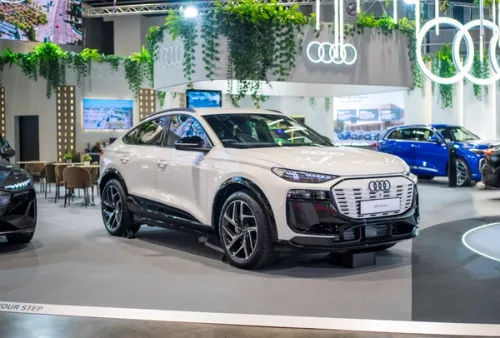Fuel Efficiency Challenge To Hat Yai: We Got 26 km/l From Driving These Fuel-Sipping Audis
We made it from Singapore to Thailand without refuelling, and with lots of fuel left to spare.







Drive to Thailand? Why not? It would be the second time I would have done so, but actually, having already done it one time all the way to Bangkok (and back), one would think me wise enough to not do it again.

But the last trip was what you would call a ‘blat’. There was hardly enough time to stop for Cafe Amazon coffee, much less care about fuel efficiency. What piqued my interest about this Audi trip was its focus on fuel efficiency.

Yes, it’s been done umpteen times in the past. But the added spanner in the works is, of course, the two border crossings which would seriously dent fuel efficiency if the frequent jams at our Checkpoints are anything to go by. Over at the Thai border, where security reigns supreme in the unsettled region, documentation and checks were stringent and time consuming as well. Looks like a great recipe for a ripe challenge, so I signed up.

Did we just commit ourselves to a 1700+ km drive? Erm, yep.
Rehashing my old adages about fuel economy, having been trained by very fuel inefficient cars I own, I started to switch on my competitive mode after reaching the first flag off point of our trip, at Shell Jalan Ahmad Ibrahim. At 4am in the morning.

But I realise the other crazy journalists also did the same. So I had better buck up. I inflated the tyres to the highest factory specs, reset the onboard trip computers and pep-talked my co-driver Sean from Horizon Drivers’ Club.

“Bro, we can win this man. $1,500 leh!” (until I realised later it was $1,500 in fuel vouchers, but nonetheless). We ran through the usual points of efficiency (gleaned from both of us driving gas guzzling saloons with decently sized straight sixes) - accelerating slowly and then keeping speed within 70-80 km/h, minimising braking, planning ahead, turning off the air-conditioning if it wasn’t too stuffy, and possibly using coasting (or cruise control?) as much as possible. The latter we had to learn as we went along, as we later figured that the A3 and Q3 behaved rather differently and required different driving styles.

You can drive to Thailand without refuelling? Can.
This is probably the right moment to introduce the cars. We essentially have two models - the A3 1.0 TFSI (Sportback and sedan) and Q3 1.5 TFSI (SUV and Sportback). These cars are exactly the same as what you can buy off the showroom.

The Q3s by virtue of their SUV body style are definitely going to be heavier and less aerodynamic. They also have a larger engine, although they are front wheel driven, just like the A3s.

Obviously, the A3s are going to be more fuel-efficient, being hatchbacks with a smaller engine, but the question is by how much more? We’ll be finding out quite soon.

And away we go… Slowly.
We kicked off the journey in the A3 Sportback. The drive started super challenging as we set off at a really ungodly hour. It was punishing, but even more so when we had to go well below the speed limit in Malaysia (no more than 80 km/h in a 110 km/h zone) in order to be efficient. The upside is that because it was so cool at dawn, we could rely on the fresh air to keep the cabin comfortable, without switching on the AC. Needless to say, we had to do this with the windows kept closed, so we had to demist the car every once in a while when it got too humid inside.

Although the A3 Sportback had no Efficiency mode to rely on, it was pretty clear that the car was naturally a fuel-sipper. Ample torque gave it decent pick-up from standstill as well as giving it enough grunt for overtakes without working too hard. It was also very ready to go into coasting mode, especially with the AC off, and when it did, the fuel economy really ticked higher noticeably. Before long we were already achieving well above 20 km/l.

Best of all, the car felt so comfortable and refined while doing so. Special mention has to go to the engine as well as the mild hybrid system, which allows a marked improvement in noise and vibration levels over the last generation. Engine start and stops, for example, are far smoother in this iteration than the last.

Through a hapless diet of unsavoury pop and classics, as well as snacks, we pulled through to day break, when it became much more palatable to drive. But also came the sun, which meant that we had to use the AC a lot more. Actually, right about this point we decided to keep the AC on, but on Eco mode. Honestly, it didn’t seem to make much of a difference to our fuel consumption, which was quite surprising. The fuel economy continued to climb the further we drove; we were making excellent progress.

Until the mountains came together with the downpour.
As if combating our tiredness wasn’t enough, the roads became busier as we passed Kuala Lumpur and shortly after, roads slicing through mountainous roads soon came our way.

Naturally, this meant our economy would be affected as we had to climb inclines, while coasting on the descent was challenging with the heavy traffic flow. It got worse as it started to lash down with rain. This was a major dent to our fuel economy as the standing water on the road quelled speed like they were blotches of glue. We were discouraged, but hearing that the other journalists encountered the same comforted us somewhat.
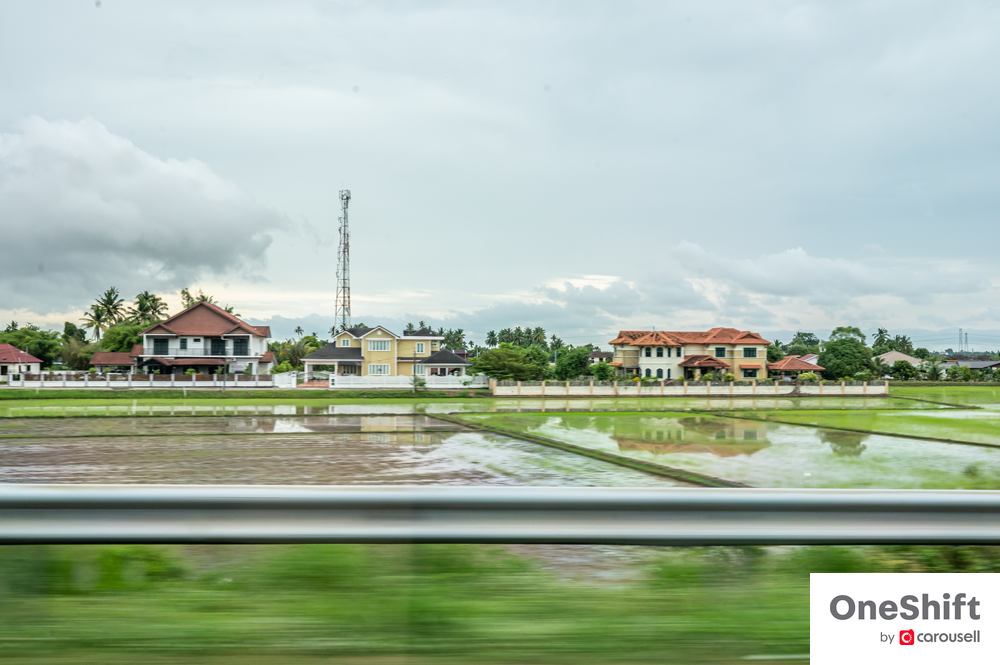
Are we there yet?
Soon the roads levelled out again as we reached the state of Penang. It was a chance to gain back lost ground and we clawed back some fuel economy, though not all. Before long, it was beginning to get dark as we arrived at the border crossing at Sadao. This trip proved to be far longer and more exhausting than we had expected.

Thankfully, the crossing was uneventful due to the great preparation by the team. Other than a short queue, we were let go into the Land of Smiles - Thailand!

Wow, the difference to Malaysia is stark!
Southern Thailand is a different kettle of fish to the rest of the country. Having a large Muslim population, it has often felt a little distant to the predominantly Buddhist culture in Thailand. As a result, there have been isolated incidents of unrest. The level of development is certainly miles away from what you see even in Malaysia. There are no large highways or well-lit streets just across the border. Everything is just a little shabby and unkempt.
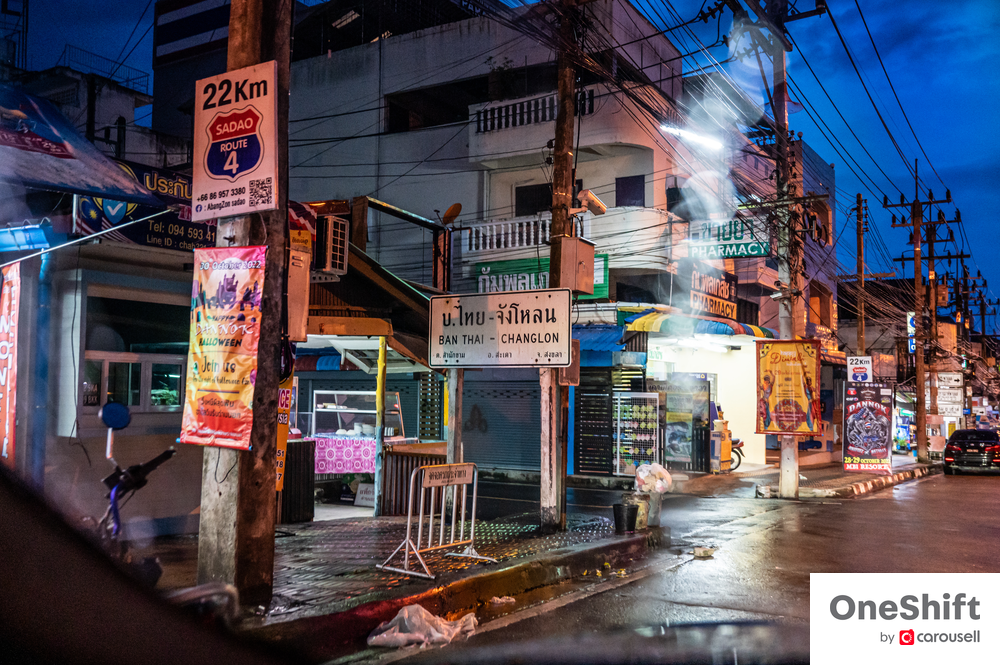
It was in this rather gloomy state that we made our last one hour journey to the destination for the day, Hat Yai.

Things started to look up tremendously when we reached. Hat Yai is bustling, feeling like a miniature Bangkok in some ways, with its very own markets, large Central mall and skyscrapers. It was an immense relief to finally reach the Shell station where we would formally conclude the first half of the fuel economy challenge. Before long, I collapsed onto my bed as exhaustion set in.

Sabai Sabai, goodbye to winning
After a refreshing day of rest at Hat Yai, we once again woke up at dawn on the third day to depart back to Singapore.

We got the Q3 on the way back, which had appreciably more space than the A3 - there was just a lot more storage space for road trip paraphernalia. The higher view out made it easier to look further ahead, too. Behind the wheel, the Q3 drives very similarly to the A3, its 4-cylinder engine perhaps being a tad more refined overall.

However, its lesser fuel economy was quite apparent and we struggled to hit anywhere the figures the A3 achieved. Any economy gained was quickly wasted away even if we accelerated gently.
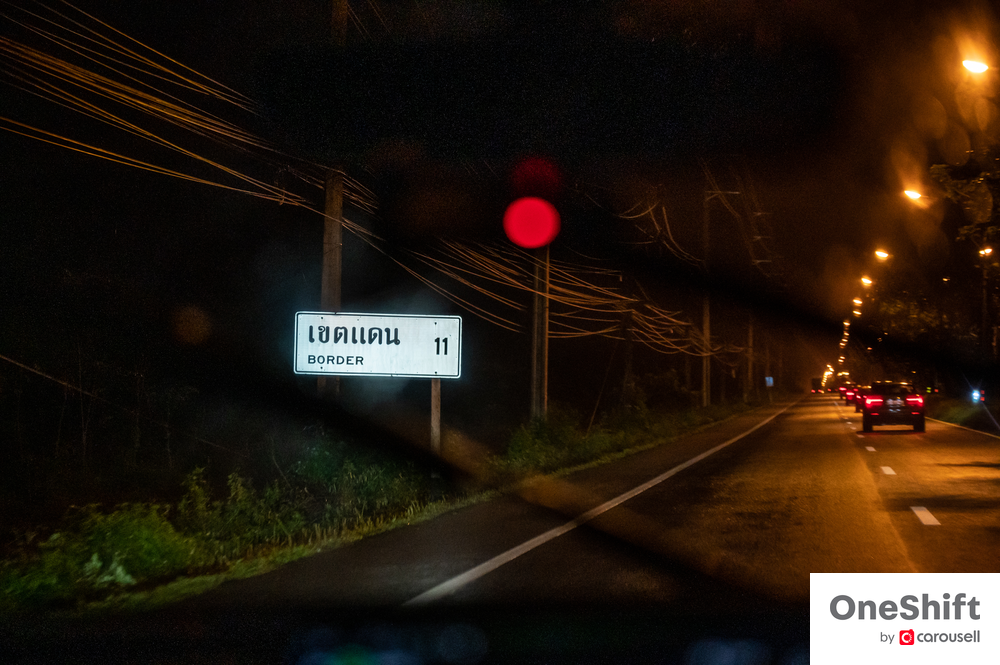
Also, things were a little more complicated for the return journey: there was a new time penalty imposed if we arrived late to the Tuas checkpoint.

However, Sean and I were feeling rather confident having clocked rather good figures for the first half. We thought we could just continue what we did to bring home the win.
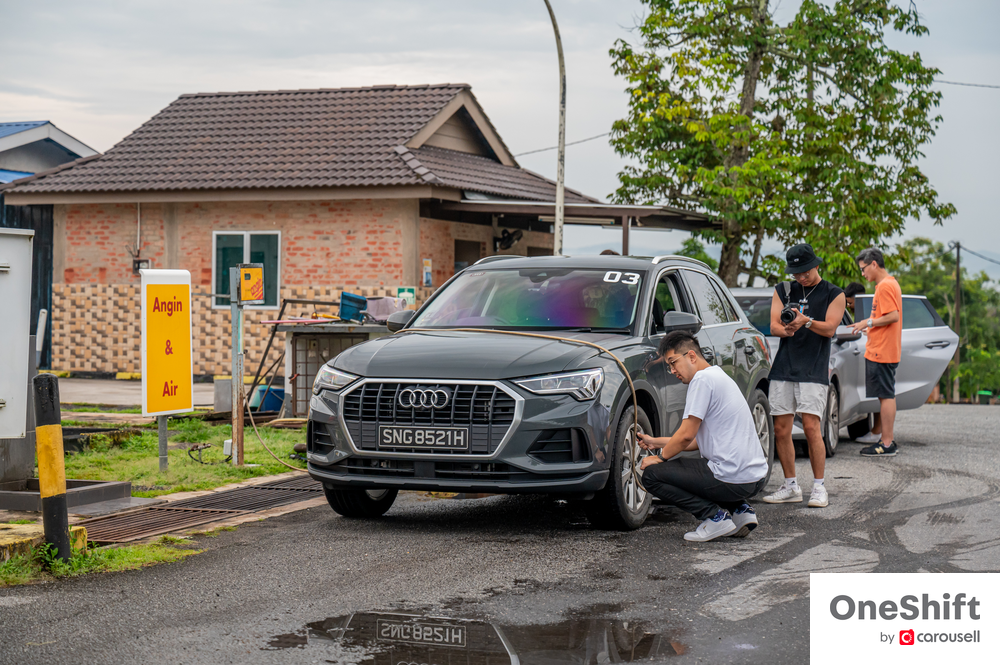
Well, we were really wrong. In hindsight, we should have checked the time we would reach Tuas right at the beginning. We did not. We merely navigated to the halfway point, because we were told that’s where everyone would stop for a group photo. People can’t get ahead then, we thought. Maybe they’d lessen the time penalty.

It was with this fog of sleepiness and presumptions that we continued our slow way down south. We even stopped for bubble tea and A&W.

Somewhere around Kuala Lumpur, it dawned on us that we really need to pick up the pace if we wanted to reach Tuas before the deadline. We were caught between a rock and a hard place - attempt to be punctual but burn more fuel, or just accept the penalty but drive as efficiently as we could? It was a situation we should not have gotten ourselves into.

We chose the former, and of course, we went a lot faster than we should to make up for lost ground. With our sloppy planning, we missed the deadline while also burning way too much fuel in the process. Bummer.

We also underestimated the adjustments we had to make to drive the Q3 versus the A3. While we hardly used cruise control on the A3 as coasting was not available while activated, the Q3 allowed coasting even while cruising automatically. We also realised that the Q3 hardly coasted, its mild hybrid battery seemingly depleting fast. Long story short, we should have just cruised control all the way at 110 km/h.

And, the result?
We came in 3rd out of 4 teams with an average of 19.95 km/l including the penalty. Our best fuel economy was in the A3 Sportback towards Hat Yai, where we clocked 25.55 km/l.

Would you do it again? What were your learning points?
I would not, unless my pace wasn’t restricted. It is simply too tiring a drive!

The main learning point is to plan ahead! All of the greatest driving techniques cannot defeat the huge time and speed penalties.
Photos by Audi Singapore, James Wong and Sean Deangelo


Get the Best Price for your used car
from 500+ dealers in 24 hours

- Convenient and Hassle-Free
- Consumer Protection
Transparent Process
With No Obligation






